This post is a record of Monday the 6th of February 2017
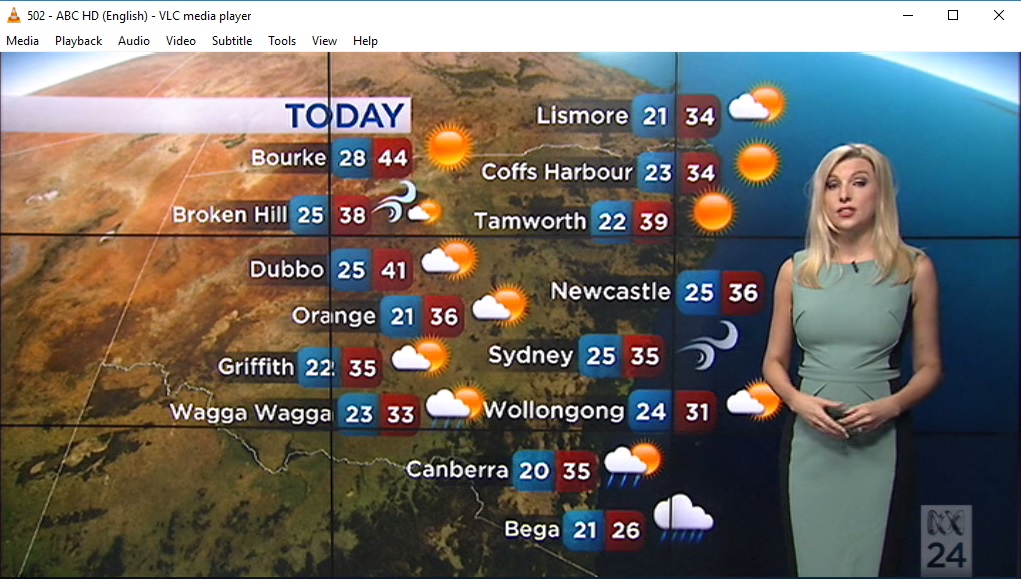
Fig 1: Weather report for Monday
Sydney had spent a hot Sunday night…
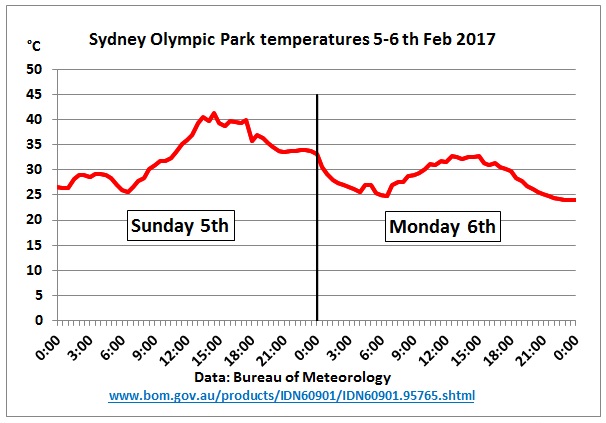
Fig 2: Lower temperatures on Monday, but it’s a working day
Every day, AEMO publishes a 7-day outlook for peak demand hours. On 4th February, the table shows the scheduled reserve for the 6th is 1,400 MW
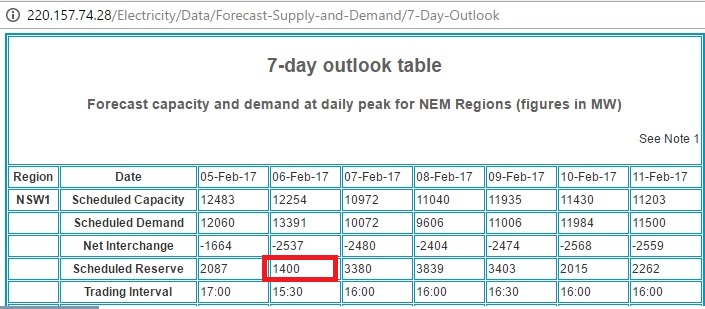
Fig 3: AEMO’s 7 day outlook published on the 4th
http://220.157.74.28/Electricity/Data/Forecast-Supply-and-Demand/7-Day-Outlook
On the 5th and 6th AEMO issues a series of notices summarized in this table:
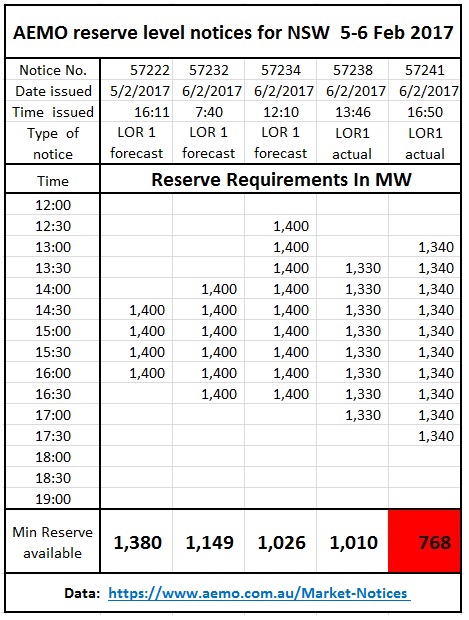
Fig 4: AEMO’s low reserve notices
Data from : https://www.aemo.com.au/Market-Notices
The 6th doesn’t start well with an AEMO forecast notice at 7:40 and ends with an actual reserve shortfall up to 17:30.
The lack of reserve notices have following levels:
If capacity reserves (medium term, short term or contingency capacity reserves) fall below certain levels, AEMO may declare low reserve or three levels of lack of reserve conditions. These are defined in clause 4.8.4 of the National Electricity Rules and are summarised below:
- Low reserve condition (LRC) – this occurs when reserve conditions fall below the standards specified by the Reliability Panel (i.e. reserve is below reserve trigger level).
- Lack of reserve level 1 (LOR1) – spare capacity reserves are inadequate to restore reserves following a contingency event (i.e. reserve is below the sum of the largest and the second largest contingency).
- Lack of reserve level 2 (LOR2) – a contingency event is likely to result in involuntary load shedding (i.e. reserve is below the largest contingency).
- Lack of reserve level 3 (LOR3) – load shedding is required or is in progress.
https://www.aemo.com.au/-/media/Files/PDF/0431-0004-pdf.pdf
Contingencies are plant, transformer or transmission line failures.
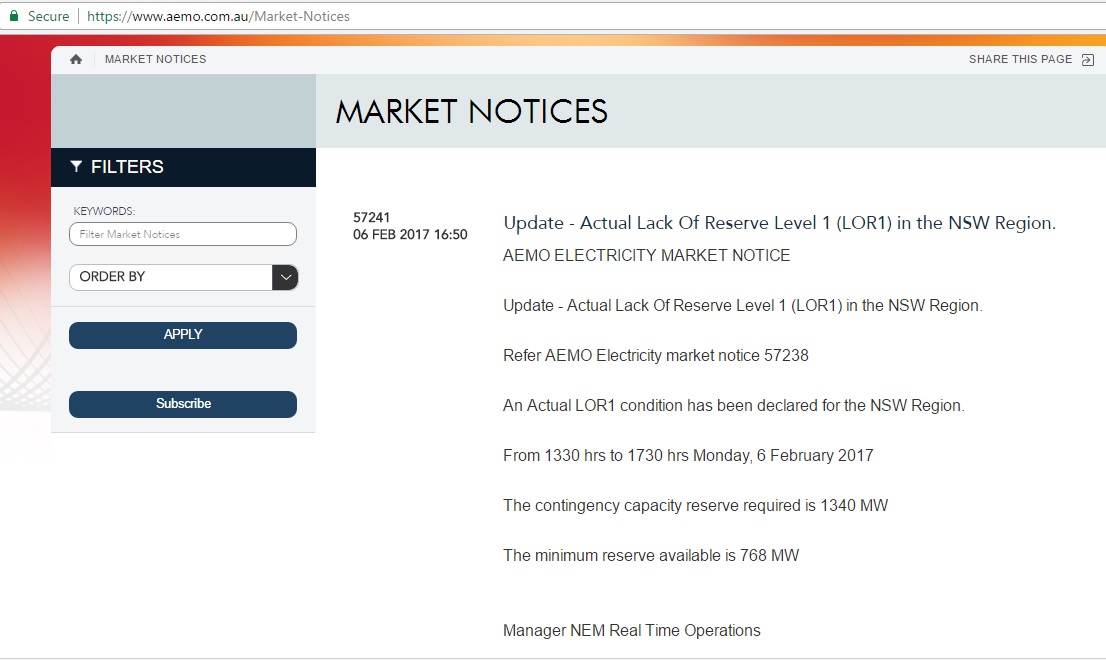
Fig 5: Notice on reserve shortage of 1,340 – 768 = 572 MW
https://www.aemo.com.au/Market-Notices
Let’s look at the generation and demand data of that day provided by NEM Watch. http://www.nem-watch.info/

Fig 6: Demand for electricity in East Coast States
High demand is marked by orange color. Queensland peaks 2 hrs later. Low demand in Victoria.

Fig 7: Available generating capacity in East Coast States
Let’s put that into a graph for NSW, including power imports from Victoria and Queensland.
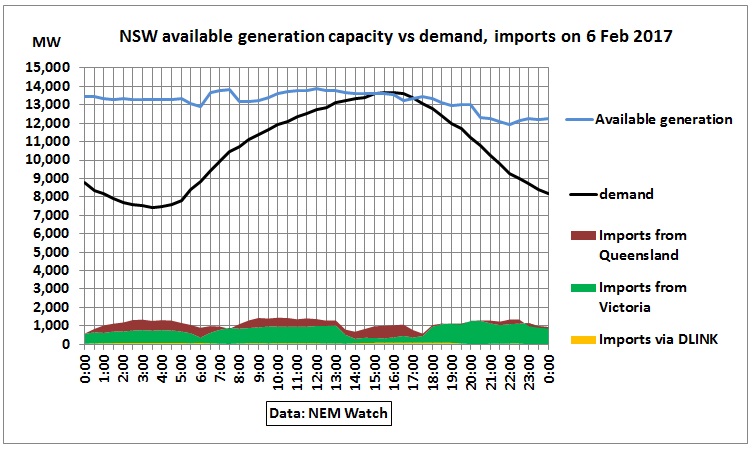
Fig 8: Available generation capacity vs demand, imports
DLINK is the direct link between NSW and Queensland (so there are 2 interconnectors)
Between 15:30 and 17:00 demand was higher than available generation, compensated by imports. Strange, though, that Victoria reduced its exports just during the peak demand period.
The imports serve another purpose, namely to provide a shared contingency reserve. NSW generators only have to supply the net demand being the total NSW demand minus imports. On top of this, there should be a sufficient contingency reserve between that net demand and available generation.
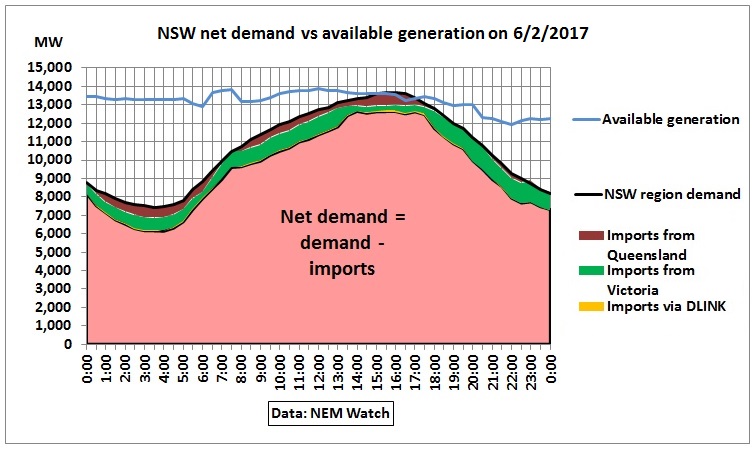
Fig 9: NSW net demand vs available generation capacity
As a last step we add to the net demand – which has to be met by NSW generation – the required reserve as determined by AEMO, in this case 1,340 MW (see market notice 57241 in Fig 5) and focus on the peak period to see more detail:
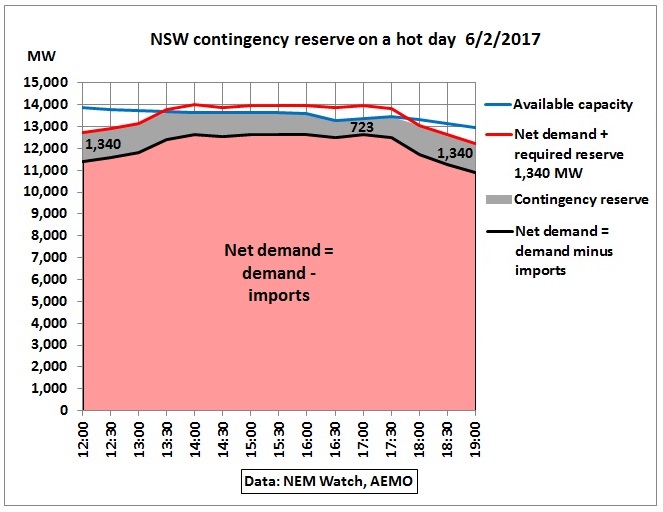
Fig 10: NSW contingency reserve (grey area)
The red line is the net demand plus the required reserve of 1,340 MW. The available generation is lower for the period 13:30 – 17:00. Instead of 1,340 the minimum reserve is only 723 MW. This is close to the 768 MW mentioned in notice 57241. The difference can be explained by the trading intervals. While the above graph is based on 30 minutes, AEMO uses 5 minutes.
So what happened to electricity prices in this critical period? They went berserk. Hitting the maximum allowable limit of $14,000 per MWh.
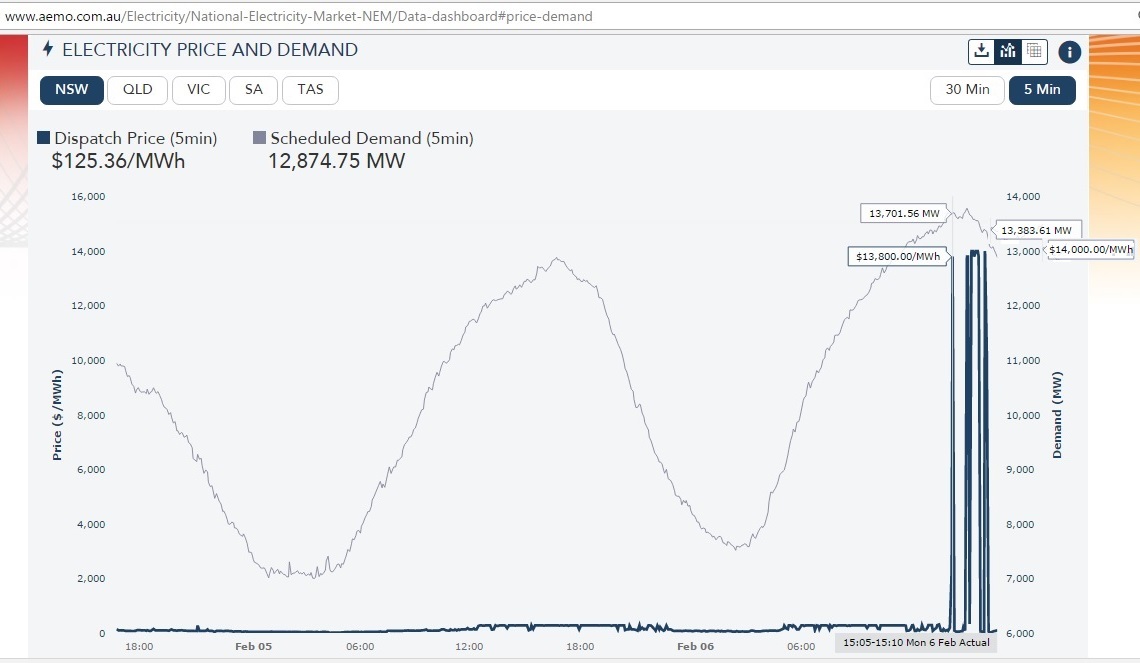
Fig 11: 5 min trading in the afternoon of the 6th
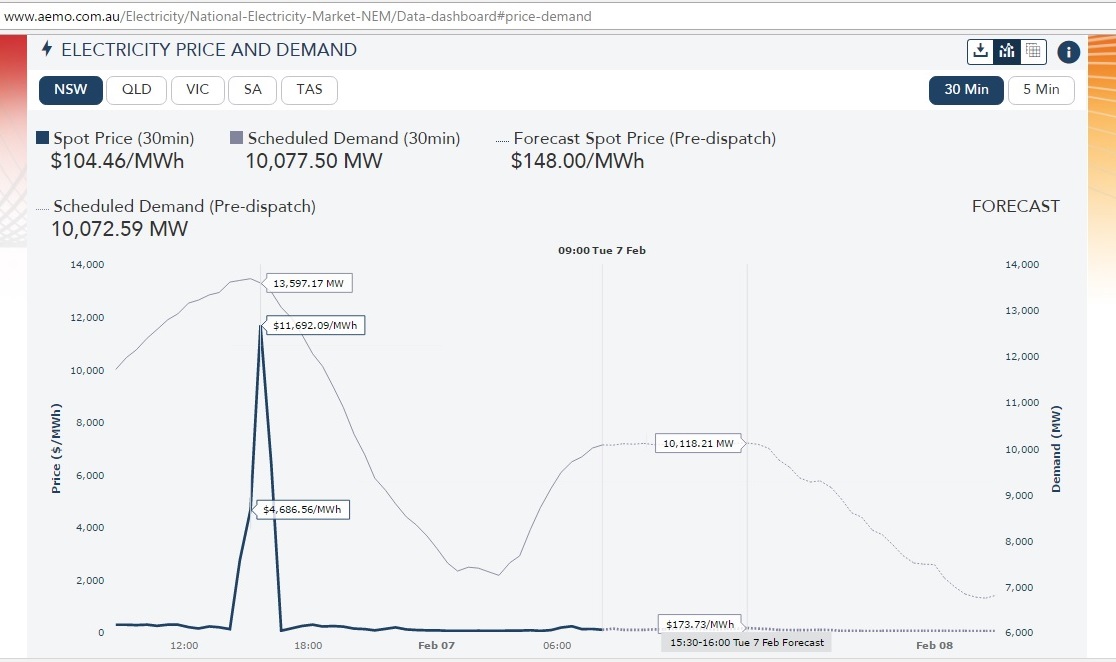
Fig 12: NSW half hr price spike on 6th February 2017 at 13,597 MW demand
So long. See you again in the next power bill. These utilities are no charity organisations
Conclusion
Every new electricity dependent development like residential towers, skyscrapers, casinos, hotels, airports, deep underground metro stations, road tunnel lighting and ventilation etc. will increase demand and therefore price spikes during peak hr. Worse still it reduces the contingency reserve, threatening the stability of the system. So unless demand is reduced by strict energy efficiency standards and energy frugal town and regional planning the situation will deteriorate with global warming. A reduction of overseas migration is imperative to get demand growth under control.
Outlook
Today is another scorcher. AEMO has advised in notice 57339 that actually there is a deficit of 419 MW.
Related post
28/1/2017
Power Supply in Australia’s New South Wales: how will it cope in coming heatwave?
http://crudeoilpeak.info/power-supply-in-australias-new-south-wales-how-will-it-cope-in-coming-heatwave